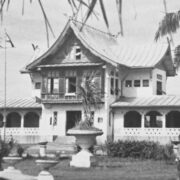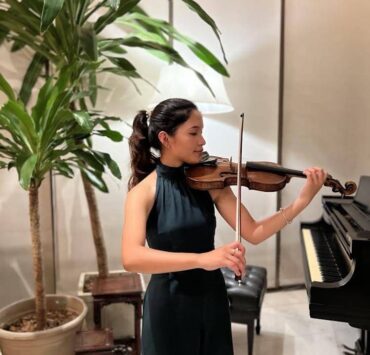Melodic milestone: Iloilo Community Orchestra debuts

How does one build up an orchestra?
Community orchestras are built from the grassroots aspirations of a communal musical experience, one shared by both musicians and listeners alike. While their beginnings may be meager, their musical journey serves as milestones of a community’s musical desires, and perhaps a refinement and maturity of musical tastes.
On the afternoon and evening of Aug. 21, the Iloilo Community Orchestra, augmented by two choirs, made their debut concert, held at the Performance Hall of the University of the Philippines–Visayas’ Museum of Art and Cultural Heritage. Regaling Ilonggo music enthusiasts who have been clamoring for so long for an orchestra they can claim as their own, the musicians showcased the best that locally honed talent and technical musicality can offer, rightly eliciting a standing ovation at the end of the program.
So how does one begin? One begins slow—or as the concert’s apt title suggested, balatyágon.
In good hands
Composed of a lean collection of string players—seven violins, three cellos, two violas and one double bass—the orchestra had to plod through 10 years of planning and false starts. But with ethnomusicologist Jose Taton Jr. (who also played the viola) at the helm and violinist Miguel Davao as its consultant, the group was in good hands despite its rocky beginnings. Surprisingly, the younger members of the orchestra took on leading roles in the debut performance: Arqzaend Andrade as concertmaster was promising and young Luis Rabut IV at the conductor’s podium, with his back to the audience, looked like Leonard Bernstein in his salad days.
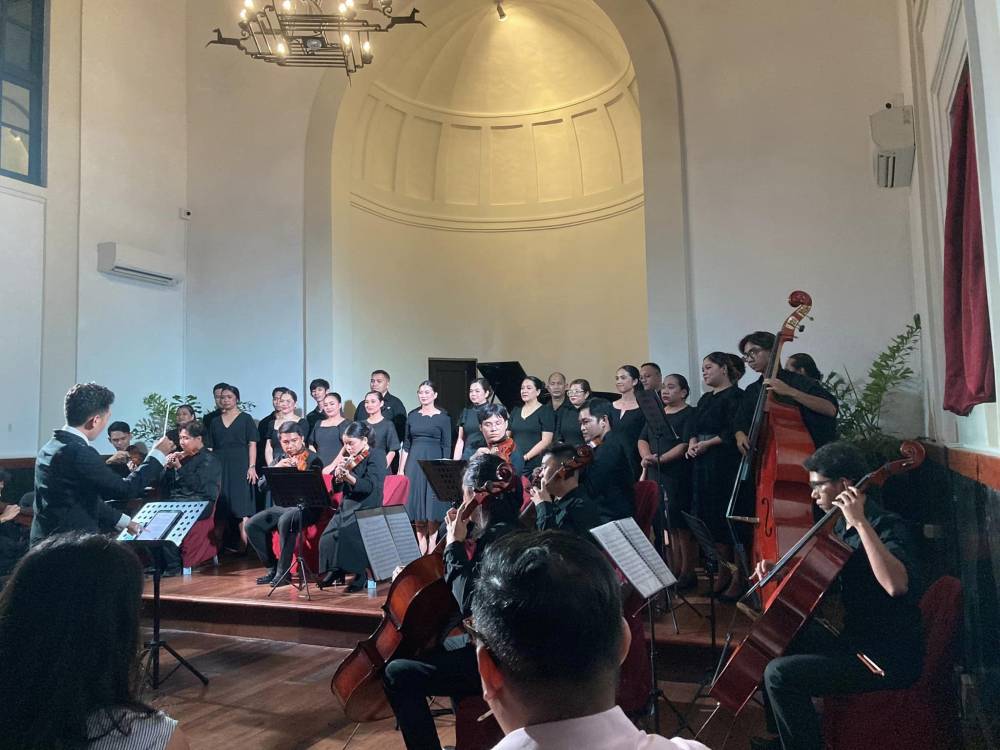
The opening numbers of the program seemed to mirror the orchestra’s baby steps. There was no thundering crash for an overture at Rabut’s downbeat; rather, there were the slow, stirring notes and carefully phrased measures of Jean Sibelius’ “Andante Festivo”—a good warm-up piece for the musicians.
The four pieces that followed were cut to the same andante pace: Robert Schumann’s “Choral,” Joseph Haydn’s “St. Anthony’s Chorale,” the caprice from Cristoph Willibald Gluck’s “Alceste” and Kentaro Sato’s “Going Home With You” all had an elegiac quality in the playing, the measured notes stretched in languid yet clear phrases, the harmonies sharp and sedate, altogether evoking a discernibly poignant pathos in the performance.
Closing the first segment of the concert was Wolfgang Amadeus Mozart’s “Ave verum.” With the Iloilo City Government Chorale and the Baganihan Singers chanting the old Latin communion hymn, the delivery was a worthy paean to its composer, in his veneration of the miracle of the Eucharist.
Human voices
With Mozart’s resurgent religiosity embedded in the melody and the ancient verses, the performance of the motet became a piteous platitude of the composer beyond the grave, soulfully profound in its clamor for divine absolution even while it foreshadowed his impending death.
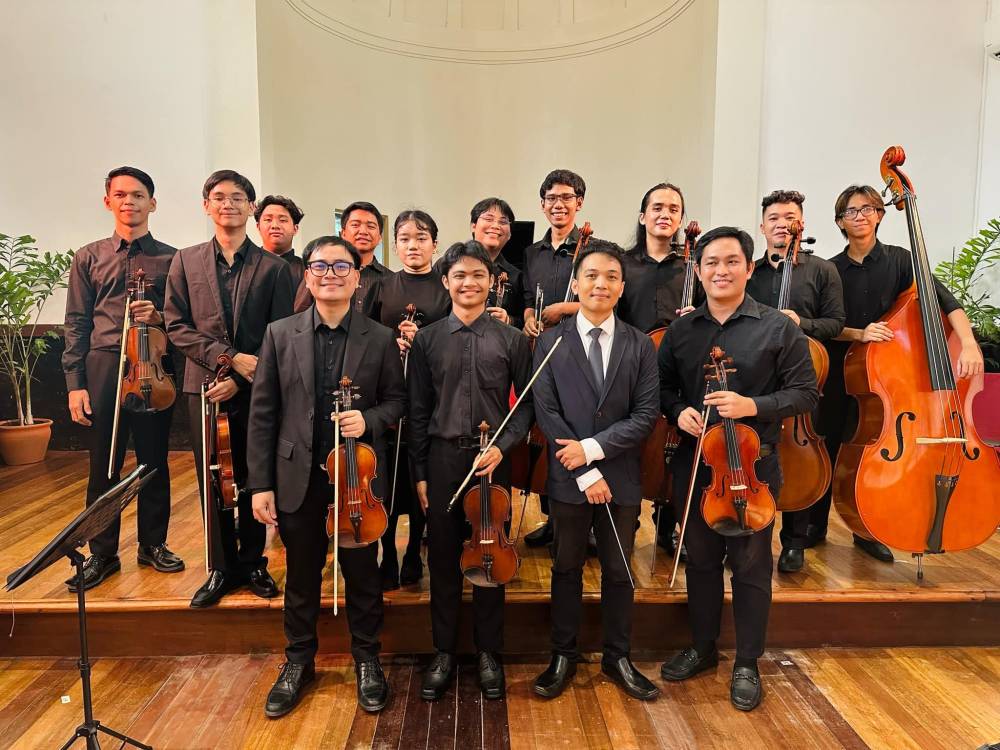
Sustaining a musical group is always a challenge, especially if this is shouldered by the community. For an inaugural concert, it was imperative that some other established musical groups should bolster the performance. Lending more majesty and grandeur to the stringed instruments during the concert was the power of human voices singing in harmony.
With John Michael Lauron conducting the singers, the combined choirs performed prayerful a cappella arrangements of Fr. Joel Eslabra’s “Amay Namon” and Bryan Adams’ “Heaven.” Harking back to the native, an arrangement of the Itneg victory chant “Iddem-dem Mallida” was delivered with much vocal vigor, the rousing chanting heavily accented by the stomping of feet on the performance hall’s wooden floors.
Stealing the spotlight was Jomel Garcia’s sweeping rendition of Ennio Morricone’s “Nella Fantasia.” No microphones were necessary—the power and tenor of his voice were enough to capture the audience’s sensibilities, despite the Italian lyrics of the song. With the melody gleaned from one of the composer’s more popular film scores, Garcia’s delivery evoked fantastical images of religious missions in a brave new world built amid a howling wilderness.
Group’s desires
The latter part of the program was markedly an exploration of the group’s desires, a glimpse of their commitment to carry on the musical seeds sown in the past decade, gathering momentum in an allegro of auspicious talent and—dare we say—virtuosity.
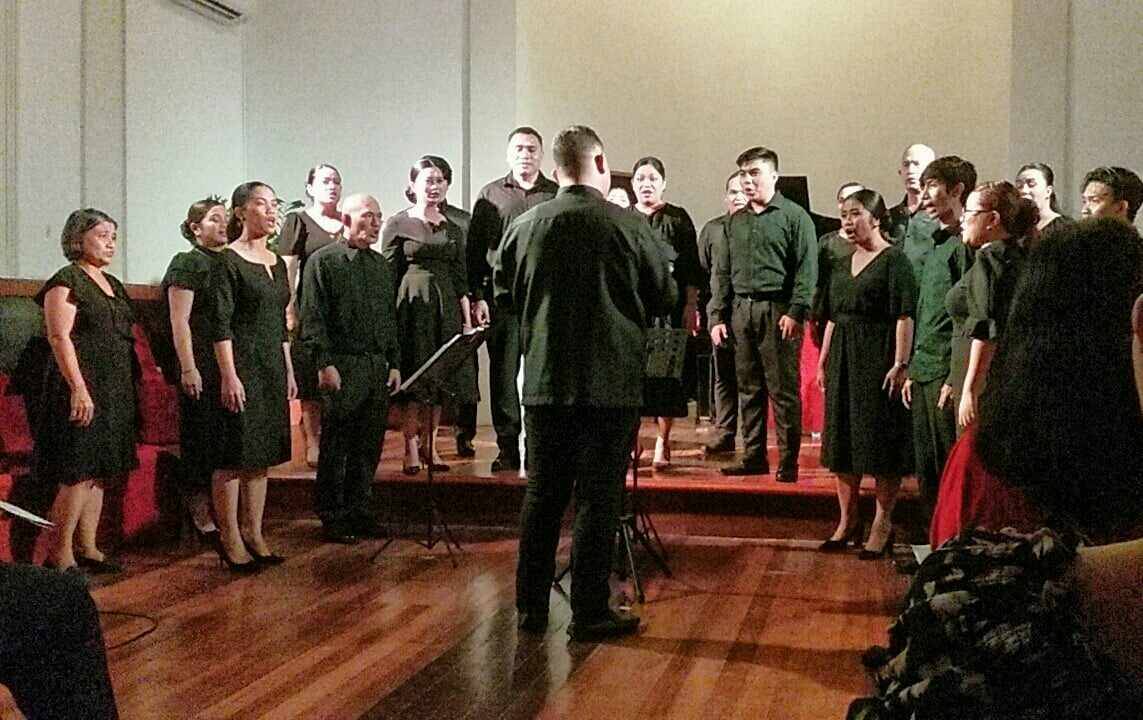
With its sharply agitated accents and almost “geometric” passages, Karl Jenkins’s ‘Palladio’ was one racy composition that proved to be a technical etude for the musicians in terms of consistency of phrasing and rhythmic integrity.
Conversely, the prominent pianissimo of the evocative strains of Edward Elgar’s “Nimrod” from his Enigma Variations demanded delicacy in the bowing, with the instruments needing to speak softly at the onset while leading toward a climactic swelling of the grandiose measures and chords near the end. Despite the absence of timpani, the grandeur of the final bars was not lost on the audience, and was redolent of “England’s green and pleasant Land.”
Off to a good start
Sharply contrasting the modern and the foreign was Taton’s arrangement of “Sa Tuburan.” The Ilonggo song as performed by a string orchestra almost assumed the tang and temper of a Castilian folk tune. Complementing this Ilonggo piece was a stirring performance of Arne Lubasan’s “Dakbanwa,” the city’s official hymn. Sung by the choirs to the accompaniment of the strings, the familiar rollicking tune reverberated within the hall, to the satisfied swaying and hushed singing of an enthralled audience.
So how do you end a debut concert already brimming with promising talents? With a cute pizzicato piece by Leroy Anderson. Requiring some clapping and onomatopoeia from the enthusiastic audience, the raggedy ending of “Plink, Plank, Plunk!” evoked polite laughter from everyone inside the performance hall, but the composer would not have been bothered: It was ragtime, after all.
So how does one build up an orchestra? Slowly, deliberately, and with a shared sense of aesthetic responsibility that art, great art in all its forms and iterations, must spring from a communal desire to experience, to disseminate and to indulge in the good and the beautiful.
The Iloilo Community Orchestra is off to a good start—but it still has a long way to go. So, if by any chance you are residing in Iloilo City—or on Panay island—and have an acquired affinity for the viola or cello or some long-fallow romance with woodwinds, brass or percussion, perhaps you will find some reignited spark of passion to join the orchestra and swell its ranks. Heed that Orphean call and give in to its musical allures. To paraphrase Shakespeare’s quip about music, play on and give us an excess of it.
John Anthony S. Estolloso is a member of the Iloilo Critics Circle and a faculty of Ateneo de Iloilo–Santa Maria Catholic School.






